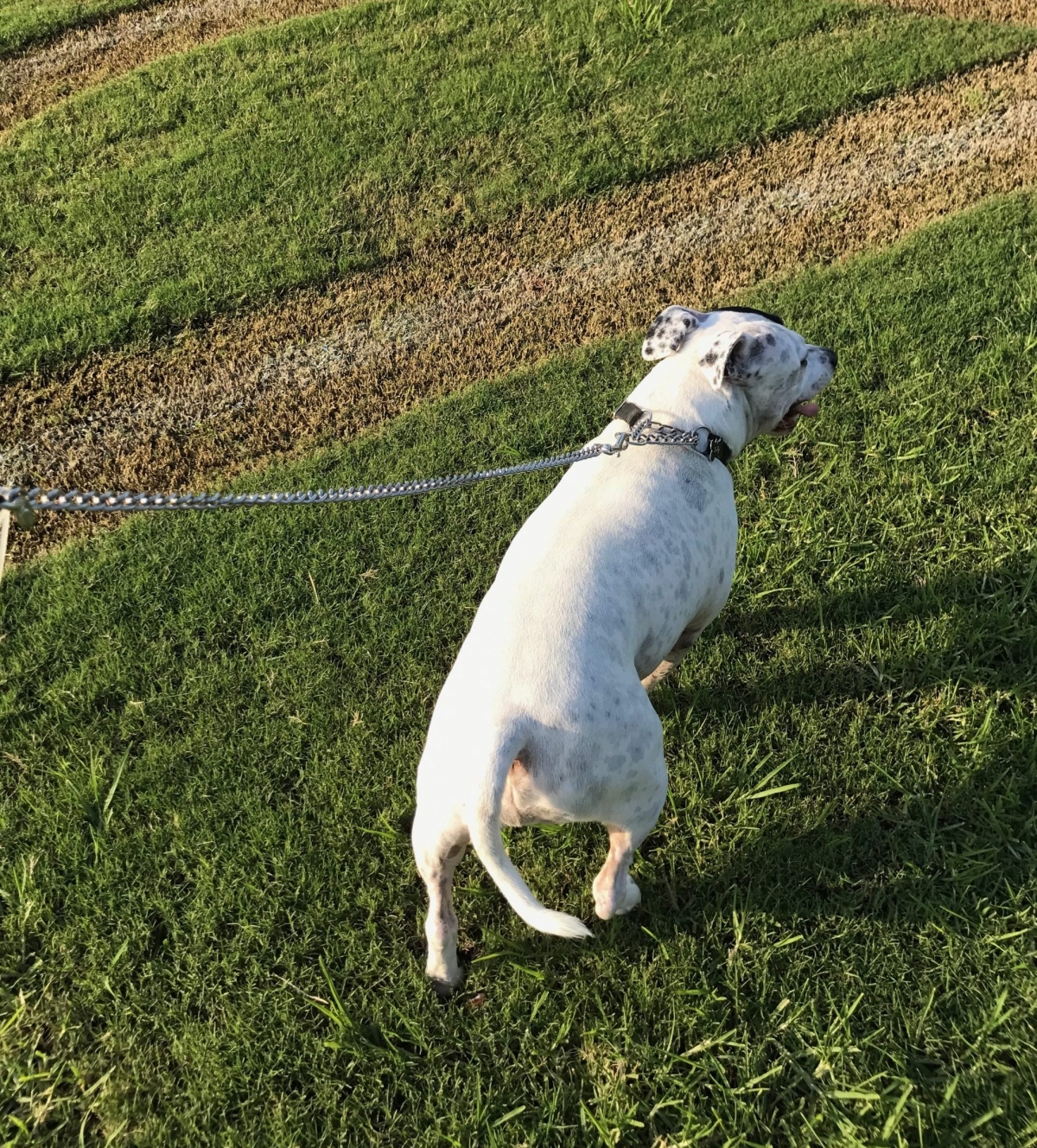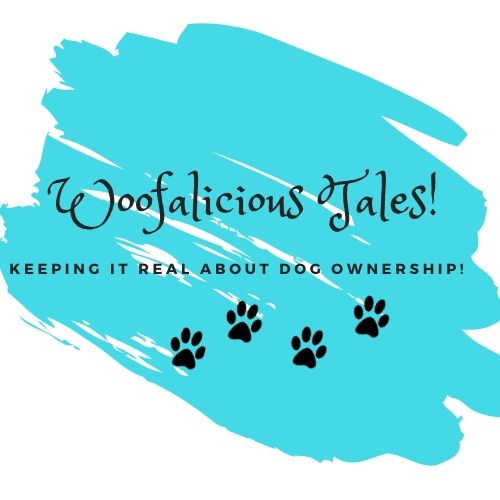
In the first part of this series of understanding how our dog’s communicate with us I want to go straight to the rear end and concentrate on the Tail. (Of course I do my blog is called Woofalicious Tales (pun intended))!!
We can learn a lot from observing the way our fur kids use their tails.
Definition of Tail!
noun – a part of an animal’s body, sticking out from the base of the back, or something similar in shape or position: the dog wagged it’s tail excitedly.
Did You Know?
The tail is an important part of the canine anatomy and is actually an extension of the spine. The bones of the tail (vertebrae) are bigger at the base and get smaller toward the tip. Soft discs cushion the spaces between the vertebrae and allow flexibility. The tail muscle and nerves facilitate tail movement and play a role in bowel control.
Click here for more information from vcahospitals.com
Images of the Dog’s Tail
The images below were searched on google images.
The image below reiterates how the tail extends from the dog’s spine (so don’t let any kids or anyone pull a dog’s tail).

This next image not only shows the inside of the dog’s tail anatomy but also the transformation from skeleton to actual tail with hair. The image is of a Collie Dog.

Okay so this last image compares the human form to the dog form and again shows how the tail is part of the spine. HHmmm we really aren’t that different from animals???

Tail Movement and What it means!
We can learn a lot from how a dog’s tail is positioned and whether it’s moving, how fast it is moving, which way it is moving, is it still or tucked under??
In an article I was reading by Stanley Coren Ph.D.,F.R.S.C. on. What Wagging Dog Tail Really Means he states that in some ways, tail wagging serves the same communication functions as a human smile, i.e. a polite greeting or a nod of recognition.
When you think about it our mouths can give away how we are feeling just as a dog’s tail can tell us how they are feeling in that moment.
For example – if we’re happy we’re smiling (tail wagging), if we’re sad we frown (tail down), if we’re angry our mouths go tense (tail alert and stiff), it definitely makes sense to me.
I always tell kids that when their dog’s tails are wagging really fast that the dogs are actually laughing and now I know I wasn’t far from the truth!!
Of course dogs come in all different shapes and sizes and therefore their tails are at different heights and lengths. This is overall tail language we’re talking.
Those with dogs who have stubbed tails you guys will have to look a lot closer or learn to read other body languages (coming up in this post series).
Further in Stanley Coren’s article, he mentions that movement in the tail is a very important aspect of the signal. Dog’s eyes are much more sensitive to the movement than they are to details or colours, so a moving tail is very visible to other dogs.
Tail Moving Combinations!
The following are definitions of common tail moving combinations – mentioned by Stanley Coren:-
- A slight wag, with each swing of only small breadth, is usually seen during greetings as a tentative, “Hello there,” or a hopeful “I’m here.”
- A broad wag is friendly: “I am not challenging or threatening you.” This can also mean: “I’m pleased.” This is the closest to the popular concept of the happiness wag, especially if the tail seems to drag the hips with it.
- A slow wag with the tail at half-mastis less social than most other tail signals. Generally speaking, slow wags with the tail in neither a particularly dominant (high) nor a submissive (low) position are signs of insecurity.
- Tiny, high-speed movements that give the impression of the tail vibrating are signs the dog is about to do something, usually run or fight. If the tail is held high while vibrating, it is most likely an active threat.
On a Side Note!!
One more thing I found really exciting in Mr Coren’s article was that scientists in Italy have discovered that when dogs feel generally positive about something or someone, their tails wag more to the right side of their rear ends!!
And when they have negative feelings about someone or something, their tails wag more to the left side of their rear ends!!
How cool is that to know? But(t) remember (yes pun intended) it’s the dog’s left and right so if you’re standing in front of your dog facing them it’ll be opposite!!
See diagram below.

So you follow the base of the spine and if the tail wags more to the right or left you know whether they’re feeling positive or negative about something.
BUT WHAT DOES IT MEAN IF THE TAIL STOPS WAGGING???
Whether your dog’s tail is moving or still it will always tell you something about the state of mind your dog is in, in that immediate moment.
The following are images and descriptions of dog’s tails telling us what they feel in that moment –
The images below were searched on google images.


In both the images above the dog’s tails are straight up and not moving ( they’re leaning forward) which represents an alert and dominate state. They can sense something and are ready for it.

In the image above we have the tail tucked underneath the bottom which means fear, I’m scared.


In the two images above both dog’s tails are up & wagging which means they are in happy playful moods.


The images above show tails are down and hanging naturally which means they are in relaxed moods.

The above image shows tail up and stiff with slight movement which means aggressive, I’m going to pounce because I don’t like this situation.


These two images above show different forms of fear submission. The first is laying down with tail tucked right up between his legs. The second is standing up but also has his tail between his legs tucked up as far as it can go. This is extreme fear submission, I’m surrendering to you and I’m extremely scared.

The above tail is all nice and relaxed laying flat (friendly submission i.e. rub my belly), which means relaxed and playful mode.
Can you see the difference from friendly submission to extreme fear submission in the two dogs laying down?

This little one here has his tail up and stiff which shows aggression but it is fearful aggression (ears back leaning back) which means, I’ll get you before you get me.
SO WHAT DOES ALL THIS MEAN?
It means that just by knowing the different movements and poses that your dog’s tail makes you can understand how they are feeling in the moment.
It’s exciting we are one step closer to understanding and communicating with our fur babies.
Right now Billy’s tail is laying naturally behind him (while he sits with his ball in his mouth) which tells me he is in a relaxed state.
We hope this helps you in further understanding what your dog is saying to you.
Can you tell me what mood Billy is in, in the cover pic, by reading his tail?
What is your fur kid’s tail telling you right now? Drop us a line and let us know, we’d love to hear from you.
Cheers
J & B at Woofalicious Tales
Related Posts
Important Lessons Your Kids Can Learn About Their Dog While In Isolation – Part 2: Anatomy!
Hey Woofa’s, Take some deep breaths, you’re doing well. You can do this…
24 May 20174 Ways Dogs Communicate with Us!
Have you ever wished you could have a conversation with your fur kid/s??? I…
24 May 2017



Leave A Comment